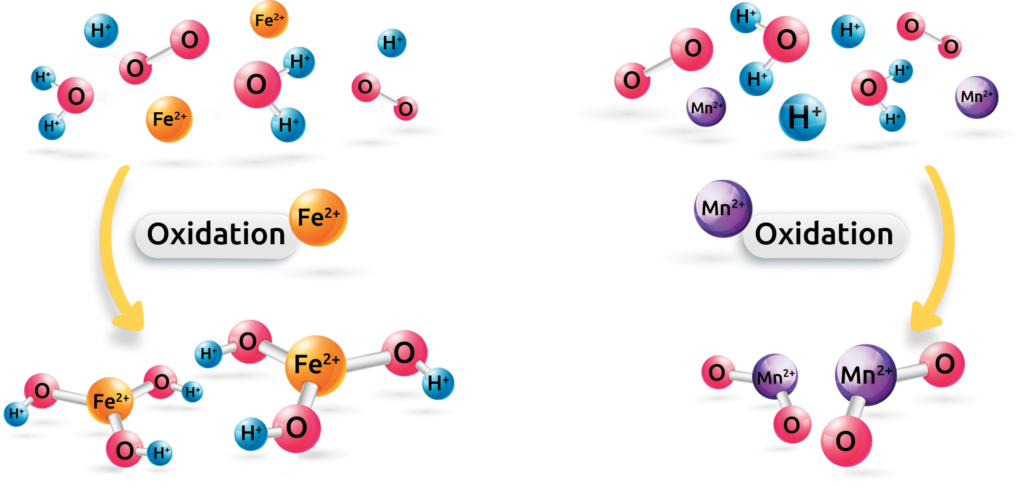water and waste water treatment
By using Nano-bubbles, we give a new meaning to Water and Wastewater Treatment
Odor Removal
The presence of hydrogen sulfide in the waste water is a source of unpleasant odor in the water. By supplying oxygen to water, hydrogen sulfide and other compounds that cause unpleasant odors in water and wastewater can be oxidized. Using a two-phase vortex pump, oxygen delivery can be done more efficiently and in a wide range. The use of this pump provides the achievement of supersaturated conditions of oxygen in water. By aerating the waste water, ammonia, which is a source of unpleasant odors in the waste water, can also be oxidized and finally eliminated. In fact, using a two-phase vortex pump, it is possible to produce bubbles in very small, micro-nano sizes. Nanobubbles will last a long time in water, and unlike ordinary bubbles that are transported to the surface in less than 5 seconds and disappear, these bubbles will remain in the water for several weeks. Prolonged presence of nanobubbles in water prevents the reduction of oxygen consumption in water. These bubbles transfer their oxygen to all parts of the water by Brownian motion. Under these conditions, the concentration of dissolved oxygen in water is maintained and the formation of unpleasant odors and the production of more hydrogen sulfide is prevented. The amount of odor control will depend on the amount of aeration in the system. Due to the high efficiency of oxygen transfer in a two-phase vortex pump, the odor removal and control process is significantly improved compared to other aeration methods.
Aeration
One of the methods of wastewater treatment is aeration in biological treatment. By aeration of the waste water, the growth and development conditions of microorganisms are provided for the waste water treatment. Aeration to the waste water can provide a significant reduction in other waste water parameters such as COD, BOD, ammonia and nitrogen. Lack of water-soluble oxygen leads to the death of microorganisms and ultimately lack of proper treatment of waste water.
One of the advantages of using a two-phase vortex pump in the aeration process is the creation of micro and nano-sized bubbles. Due to the unique properties of these bubbles, the efficiency of oxygen transfer and oxygen distribution in all parts of the water in this system is higher than other conventional aeration systems. These conditions lead to increased biological treatment efficiency. Significant reduction in energy consumption is another advantage of using a two-phase vortex pump compared to other aerators. In this method, aeration is done without the use of equipment such as blowers and compressors and aeration is done only through two-phase vortex pumps.

Algae removal
Maintaining a good level of DO in lakes and pools is an important and vital factor in maintaining the health of the ecosystem. By supplying oxygen to ponds and lakes, we can see a significant reduction in unpleasant odors, improvement and clarity of water without the use of chemicals. The high durability of nanobubbles in water leads to the maintenance of an adequate amount of dissolved oxygen in water. By using the aeration process and providing suitable oxygen for bacteria and aerobic microorganisms, it is possible to reduce the organic matter in the ponds. Phosphorus and nitrogen play an important role in the growth of algae and their presence in water leads to poor water quality. The production of micro-nanobubbles using a two-phase vortex pump and the presence of these bubbles in water due to their high durability, leads to the destruction of algal cells. By oxygenating the water, the amount of nitrogen and phosphorus can be significantly reduced, which leads to the removal of turbidity, unpleasant odor of water and finally the elimination of algae.
Disinfection and washing process
In addition to deodorization ability, oxygen is also a very strong disinfectant and leads to the elimination of all types of microbial contaminants, including viruses and bacteria. Free radicals are released in the process of microbubble decay. Removal of pathogens and reduction of biofilm are the benefits of hydroxyl radicals due to their high oxidation properties. Nanobubbles can clear surfaces of oils and proteins. Other advantages of micro-nano-bubbles in the disinfection process include the following:
- The process of washing fruits and vegetables
- The process of washing food transmission lines in the food industry
- Cleaning and descaling of ceramic membrane filters

